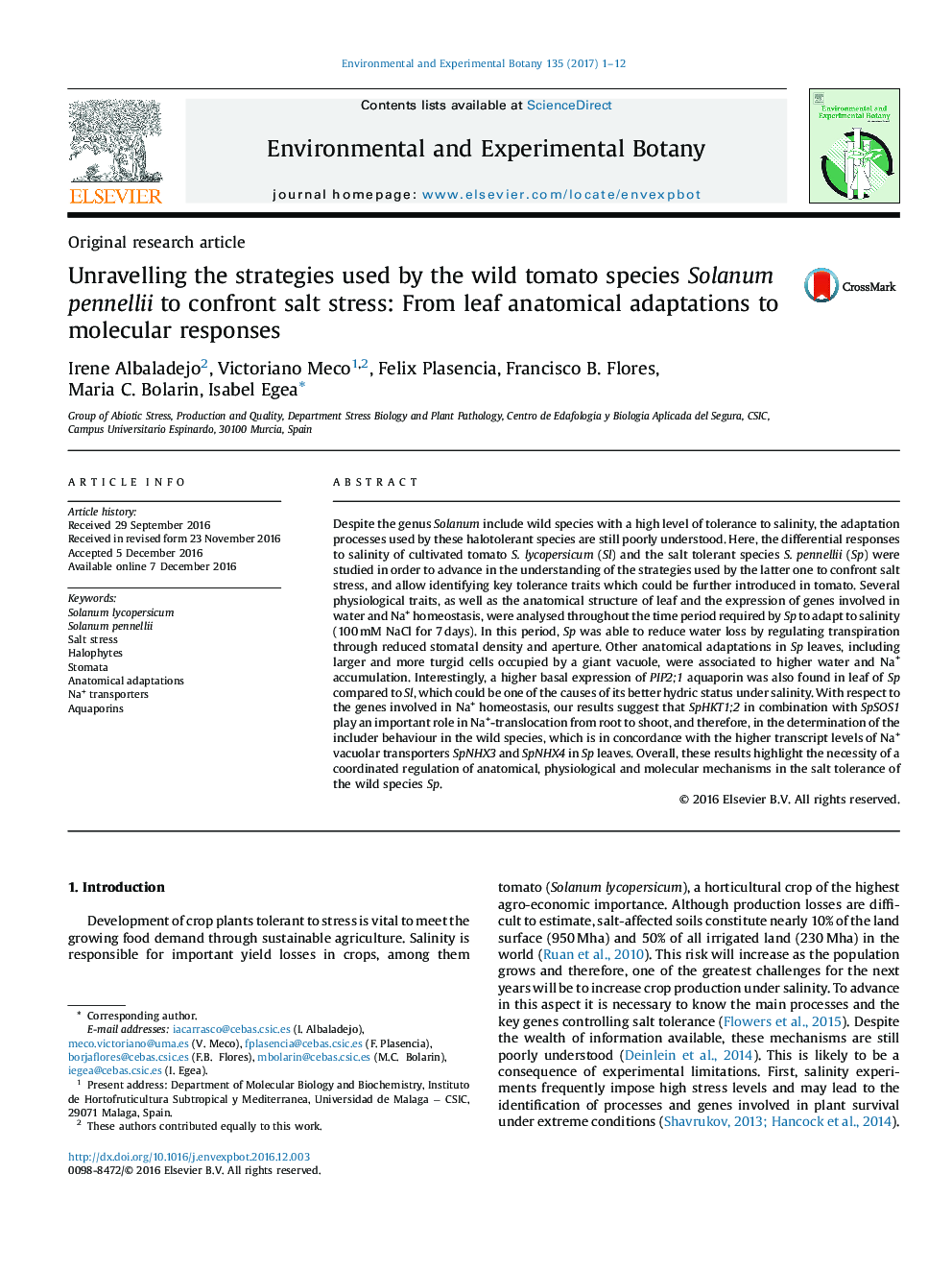| کد مقاله | کد نشریه | سال انتشار | مقاله انگلیسی | نسخه تمام متن |
|---|---|---|---|---|
| 5766681 | 1628042 | 2017 | 12 صفحه PDF | دانلود رایگان |

- Wild tomato species are of great interest in the study of salt tolerance mechanisms.
- Salinity adaptation of S. pennellii depends on coordinated anatomical, physiological and molecular strategies.
- Leaf anatomical changes are crucial in the adaptation of S. pennellii to salinity.
- Improved water homeostasis of S. pennellii is related to its higher salt tolerance.
- S. pennellii shows differential expression of key genes involved in Na+ homeostasis.
Despite the genus Solanum include wild species with a high level of tolerance to salinity, the adaptation processes used by these halotolerant species are still poorly understood. Here, the differential responses to salinity of cultivated tomato S. lycopersicum (Sl) and the salt tolerant species S. pennellii (Sp) were studied in order to advance in the understanding of the strategies used by the latter one to confront salt stress, and allow identifying key tolerance traits which could be further introduced in tomato. Several physiological traits, as well as the anatomical structure of leaf and the expression of genes involved in water and Na+ homeostasis, were analysed throughout the time period required by Sp to adapt to salinity (100Â mM NaCl for 7Â days). In this period, Sp was able to reduce water loss by regulating transpiration through reduced stomatal density and aperture. Other anatomical adaptations in Sp leaves, including larger and more turgid cells occupied by a giant vacuole, were associated to higher water and Na+ accumulation. Interestingly, a higher basal expression of PIP2;1 aquaporin was also found in leaf of Sp compared to Sl, which could be one of the causes of its better hydric status under salinity. With respect to the genes involved in Na+ homeostasis, our results suggest that SpHKT1;2 in combination with SpSOS1 play an important role in Na+-translocation from root to shoot, and therefore, in the determination of the includer behaviour in the wild species, which is in concordance with the higher transcript levels of Na+ vacuolar transporters SpNHX3 and SpNHX4 in Sp leaves. Overall, these results highlight the necessity of a coordinated regulation of anatomical, physiological and molecular mechanisms in the salt tolerance of the wild species Sp.
Journal: Environmental and Experimental Botany - Volume 135, March 2017, Pages 1-12